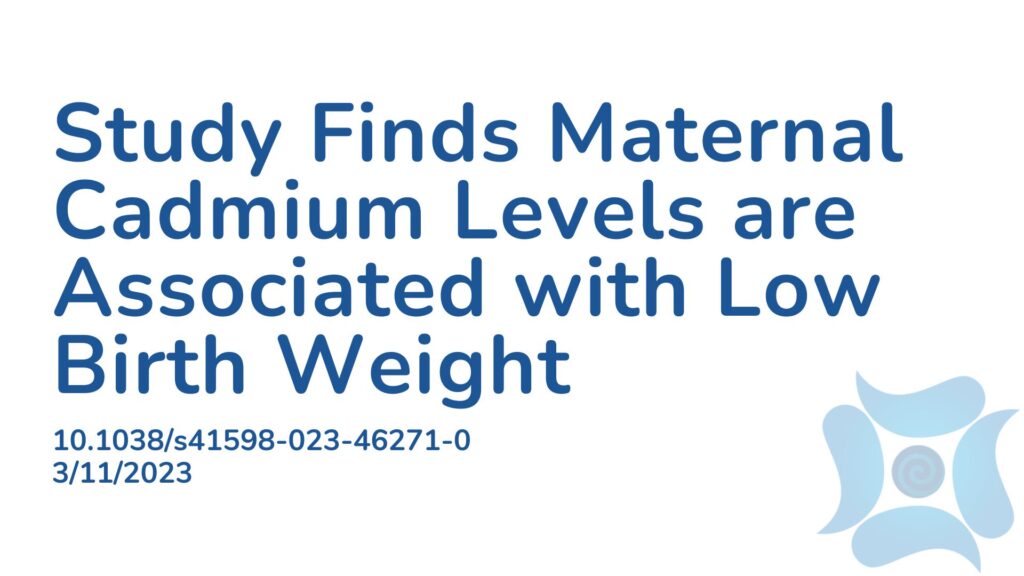Summary:
Lead, mercury, and cadmium are toxic metals linked to substantial health issues. These metals are of particular concern when exposed to fetuses, given their ability to cross the blood-placental barrier. Previous studies have noted that poor fetal growth and low birth weight may significantly contribute to morbidity and disability in early childhood. Low infant birth weight for instance has been associated with chronic health issues like diabetes and adult obesity. This study aimed to explore the links between heavy metal exposure (lead, cadmium, and mercury) during early pregnancy, late pregnancy, and at birth. The paper looked at birth outcomes such as birth weight and size at gestational age. The results showed that maternal cadmium concentrations in both early pregnancy and late pregnancy demonstrated significant correlations with low birth weight.
Abstract:
Exposure to heavy metals such as lead, cadmium, and mercury poses serious health risks to pregnant women because of their high toxicity. In this study, we investigated the associations of heavy metal exposure with birth outcomes of Korean infants. Data of 5,215 women between 2015 and 2019 were analyzed. This study was part of the Korean Children’s Environmental Health (Ko-CHENS) study. Linear regression and logistic regression analyses were used to examine effects of concentrations of lead, cadmium, and mercury on birth weight, small for gestational age, and large for gestational age after adjusting for maternal age groups, parity, infant sex, education, income, smoking, drinking, body mass index, stillbirth, premature birth, diabetes, hypertension, and gestational diabetes. Besides adjusting for these covariates, each metal was mutually adjusted to estimate birth weight and large for gestational age status. Maternal cadmium concentrations during early pregnancy (β = − 39.96; 95% confidence interval (CI): − 63.76, − 16.17) and late pregnancy (β = − 37.24; 95% CI − 61.63, − 12.84) were significantly associated with birth weight. Cadmium levels during early pregnancy (adjusted OR = 0.637; 95% CI 0.444, 0.912) were also associated with large for gestational age status. Our findings suggest that prenatal cadmium exposure, even at a low level of exposure, is significantly associated with low birth weight.
Article Publication Date: 3/11/2023
DOI: 10.1038/s41598-023-46271-0




